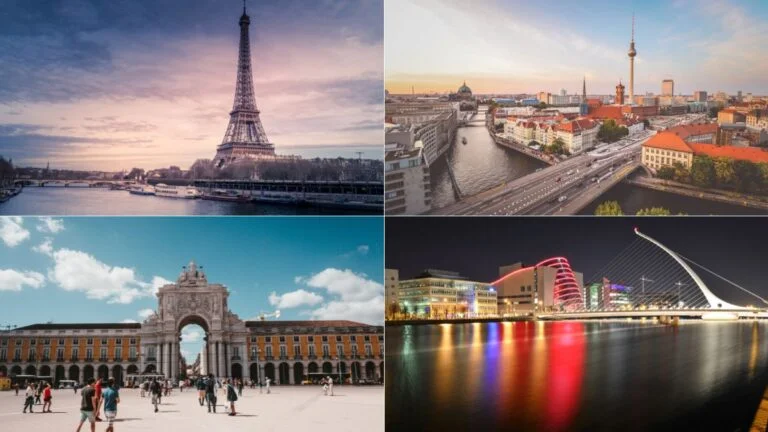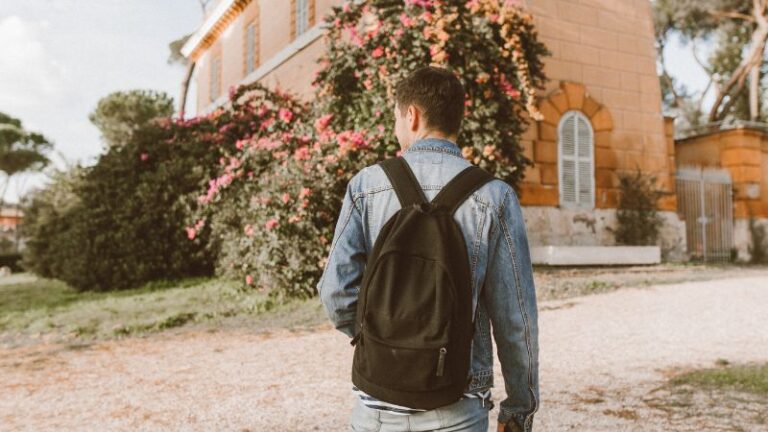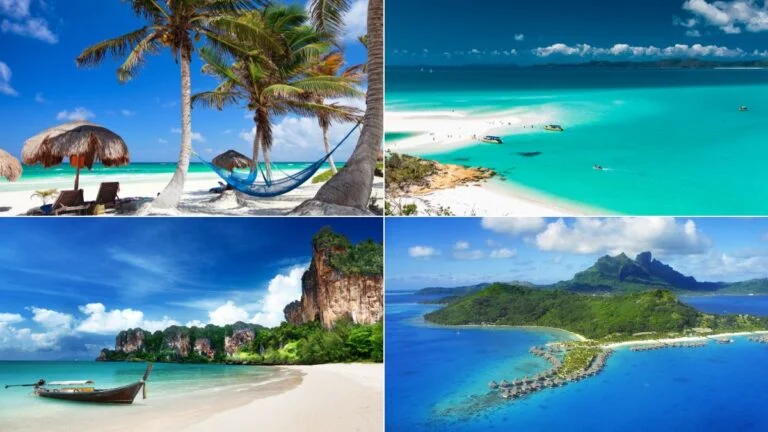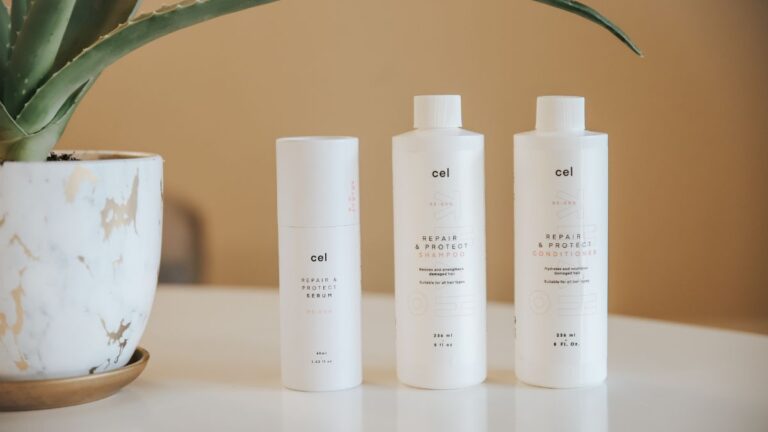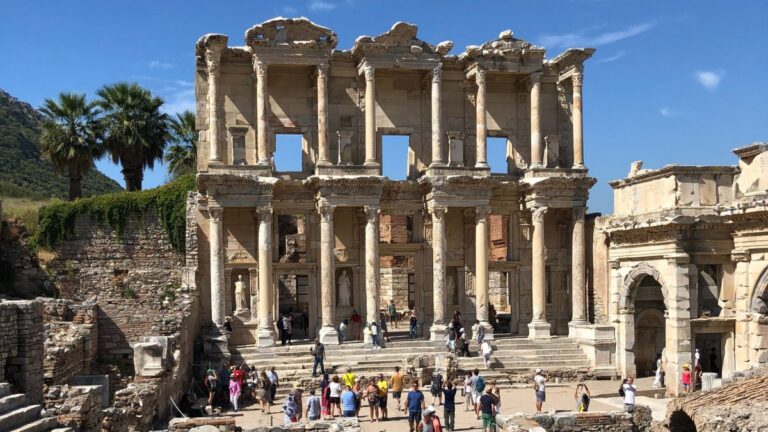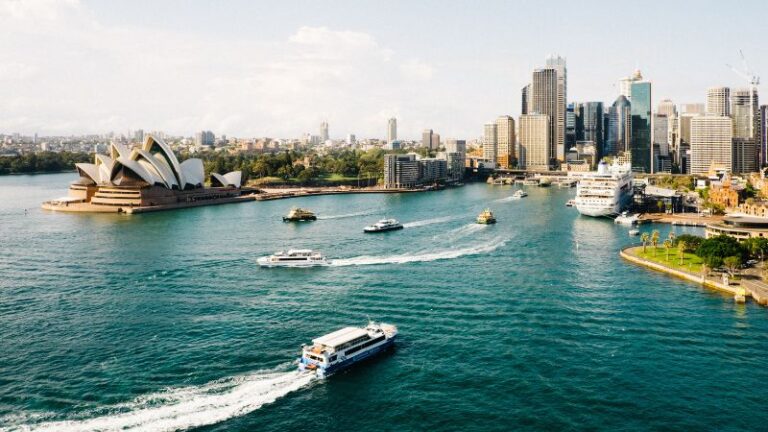Worst Time to Visit Singapore: Coping with Monsoon Seasons and High Tourist Times
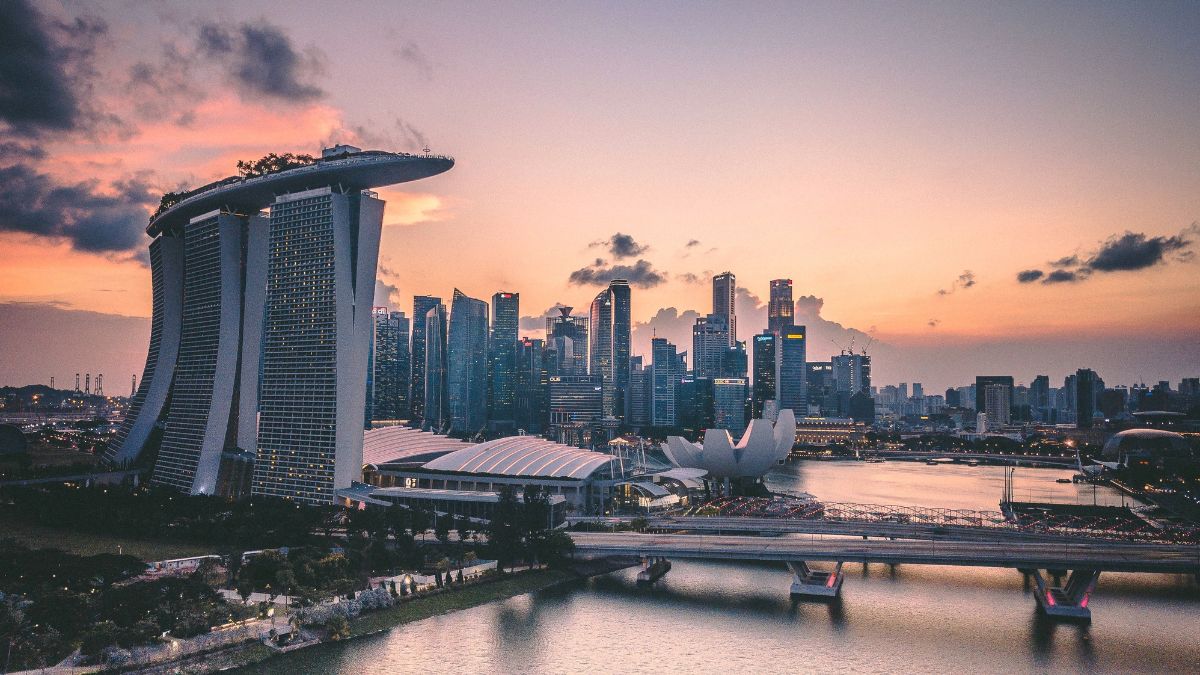
As participants in Amazon Associates and other programs, we earn from qualifying purchases. This comes at no additional cost to you. For more details, see our Affiliate Disclosure.
Visiting Singapore, with its vibrant mix of cultures, tantalizing food scene, and impressive skyscrapers, can be an enriching experience at any time of the year. However, certain periods might prove less ideal due to the prevalence of monsoon seasons and peak tourist times.
This article aims to delve into the less favorable times to visit this island city-state, helping you better plan your trip to avoid the relentless rains of the monsoon and the crowd congestion of high tourist seasons.
Understanding Singapore’s Climate
Situated just north of the equator, Singapore enjoys a tropical rainforest climate that’s uniformly warm and humid throughout the year. The city-state does not have distinct seasons like summer, autumn, winter, and spring. Instead, its climate is characterized by two monsoon seasons interspersed with inter-monsoonal periods. Temperatures typically range from 25°C (77°F) to 31°C (88°F) during the day, with humidity levels often exceeding 80%.
There are two main monsoon seasons: the Northeast Monsoon (from November to March) and the Southwest Monsoon (from June to September). During these monsoon periods, Singapore experiences heavy, albeit short-lived, rain showers, usually occurring in the afternoon. However, despite the monsoon seasons, there are still ample sunshine hours, and the rain can sometimes even provide a refreshing respite from the intense humidity.
The periods between these monsoons (late March to May and late September to early November) are relatively drier but still experience occasional rain showers.
Knowing Singapore’s climate is key to understanding the best and worst times to visit and helps inform what to pack for your trip. In the following sections, we’ll go in-depth about the two monsoon seasons, the high tourist times, and how to navigate them for a more pleasant travel experience.
When Monsoon Seasons Hit: A Deep Dive
Singapore’s unique geographical location lends itself to two primary monsoon seasons each year, each characterized by distinctive weather patterns.
The Northeast Monsoon (November to March)
Running from November through March, the Northeast Monsoon is divided into two phases. The first phase, from November to early January, is typically known as the wet phase. During this period, Singapore experiences more frequent and prolonged rainfall, often heavy and accompanied by thunderstorms. The rainfall is most intense in December, which is considered the wettest month of the year.
The second phase, from late January to March, sees significantly less rainfall. This period, known as the dry phase, still experiences occasional rain, but the weather is generally more settled and less prone to heavy downpours.
The Southwest Monsoon (June to September)
The Southwest Monsoon season occurs from June to September. It is characterized by relatively drier conditions compared to the Northeast Monsoon. However, don’t be fooled by the term ‘drier’ – there are still frequent rain showers, but these tend to be shorter and less severe. Rainfall during this period usually occurs in the afternoons and is often coupled with thunderstorms.
Despite the name, the Southwest Monsoon does not mean that winds blow from the southwest. Instead, it refers to the monsoon rain band, or monsoon trough, moving southwest, away from Singapore.
Monsoons in Singapore can be quite unpredictable, so it’s always advisable to keep an umbrella or raincoat handy, regardless of the forecast. Remember, even in the middle of the monsoon season, the sun often shines, and the city’s beauty remains undiminished.
High Tourist Seasons in Singapore: What to Expect
In addition to understanding the weather patterns, knowing the high tourist seasons in Singapore can help you navigate the city better, as these periods are characterized by larger crowds, longer wait times at attractions, and potentially higher prices for accommodation and flights.
The Peak Seasons
Singapore sees two major peak tourist seasons. The first coincides with the year-end holidays, from mid-November to early January. During this period, Singapore sparkles with holiday decorations, and many tourists flock to the city to enjoy the festive atmosphere. The timing also coincides with school holidays in many parts of the world, making it a popular time for family vacations.
The second peak season falls during the middle of the year, typically from June to July, again aligning with school holidays in many countries. Despite this being a part of the Southwest Monsoon season, the relatively lighter rain showers and the wide range of indoor attractions make Singapore an appealing destination.
What to Expect
During these high tourist times, expect popular tourist spots like Marina Bay Sands, Gardens by the Bay, Universal Studios, and the shopping districts of Orchard Road to be particularly crowded. Queues for attractions will likely be longer, and restaurants and cafes may be busier than usual.
Hotel prices can also surge due to the high demand. If you’re planning to visit during these periods, it’s advisable to book your accommodation and any must-do activities well in advance.
Although these seasons are bustling, they offer an unmatched lively atmosphere with various events, festivals, and activities, making the city all the more exciting. However, if you prefer a quieter, more relaxed visit, you might want to consider scheduling your trip during the off-peak periods.
Navigating the Northeast Monsoon: November to March
The Northeast Monsoon, spanning from November to March, is a period when Singapore experiences a significant amount of rainfall. However, with the right approach, you can still enjoy your trip even during these wetter months. Here are some tips to help you navigate this season:
Embrace the Rain
Rain in Singapore is typically intense but brief, so don’t let it deter your plans. Carry a small, lightweight umbrella or a poncho in your day pack – these can be easily purchased from convenience stores all around the city.
Plan for Indoor Activities
Singapore offers an array of indoor attractions that are perfect for rainy days. Consider exploring the city’s world-class museums, like the ArtScience Museum or the National Museum of Singapore. Shopping malls like Marina Bay Sands and Orchard Road provide not only shopping opportunities but also entertainment and dining options.
Public Transport is Your Friend
Singapore boasts an efficient public transportation system. The Mass Rapid Transit (MRT) is an especially convenient way to get around, allowing you to avoid getting wet while moving from one indoor location to another. Buses and taxis are also readily available.
Dress Appropriately
Despite the rain, Singapore remains warm. Opt for light, breathable, and quick-drying clothes. Waterproof shoes or sandals can also be beneficial.
Book Accommodations in Advance
November to January coincides with the peak tourist season. Hotels may be booked out faster and prices can rise, so secure your accommodation in advance.
Enjoy the Beauty
Finally, the rain often adds a refreshing touch to the city’s landscapes. Gardens by the Bay, for instance, takes on a new beauty under the rain. So, take the opportunity to enjoy this unique aspect of Singapore during the Northeast Monsoon.
Surviving the Southwest Monsoon: June to September
The Southwest Monsoon, running from June to September, brings less rain than the Northeast Monsoon but still results in periodic showers, particularly in the afternoons. If you’re planning a trip during this season, here are some strategies to make the most of your visit:
Plan Your Day Around the Weather
Typically, the mornings are sunnier during the Southwest Monsoon, while afternoons may see showers. You might want to schedule outdoor activities for the morning and leave afternoons for indoor attractions or relaxing at your hotel.
Stay Flexible
The weather can change rapidly in Singapore. It’s best to remain flexible with your plans and be ready to adjust your itinerary based on the day’s weather. There’s plenty to do indoors if the rain sets in.
Equip Yourself
Just like in the Northeast Monsoon, carrying an umbrella or a raincoat can prove invaluable during sudden showers.
Explore Indoor Attractions
Singapore has no shortage of indoor attractions that cater to diverse interests. Visit the SEA Aquarium, explore the Cloud Forest and Flower Dome at Gardens by the Bay, or delve into Singapore’s past at the Changi Museum. The city’s numerous shopping malls also offer various leisure options, including cinemas, arcades, and food courts.
Take Advantage of Cooler Afternoons
After a heavy shower, the temperature can drop a few degrees, offering a respite from Singapore’s usual heat. This can be a great time to visit parks or walk around the city, as long as you don’t mind the humidity that follows the rain.
Book in Advance
Although the Southwest Monsoon doesn’t align with the biggest tourist peaks, June and July can still be busy due to school holidays. Therefore, booking your accommodations and tickets to popular attractions in advance is a wise move.
The Peak Tourist Seasons: A Detailed Breakdown

Singapore’s peak tourist seasons occur twice a year, primarily dictated by global school vacation schedules and festive occasions. Here’s a detailed breakdown of what to expect during these busy periods:
Year-end Holidays (Mid-November to Early January)
The year-end holidays, from mid-November to early January, are a popular time for tourists to visit Singapore. This coincides with the wet phase of the Northeast Monsoon, but the heavy rainfall does not deter visitors, given the city’s festive atmosphere.
During this time, Singapore is beautifully lit up with holiday lights, especially around Orchard Road and Marina Bay. Major attractions like Gardens by the Bay host special events like Christmas Wonderland, drawing crowds with its stunning light displays and festive markets.
Mid-year Holidays (June to July)
The mid-year holiday period, from June to July, is the second peak tourist season. This falls during the Southwest Monsoon, characterized by less intense rain showers than the Northeast Monsoon. Many families choose this time to visit Singapore because it aligns with summer breaks in various parts of the world.
During these months, attractions such as Universal Studios Singapore, Sentosa Island, and the Singapore Zoo can be especially crowded. Various summer events, festivals, and school holiday promotions also take place during this period, adding to the city’s appeal.
Navigating the Crowds
During peak seasons, visitors should anticipate larger crowds and longer wait times at popular attractions. It’s advisable to purchase tickets for major attractions online in advance to save time. Similarly, if you plan to dine at popular restaurants or food centers, consider avoiding typical meal times when crowds peak.
Accommodation can be another challenge during these periods. Room rates often increase due to high demand, and popular hotels can get fully booked. So, it’s advisable to secure your accommodations well in advance.
While peak tourist seasons in Singapore are busy, they also offer an energetic atmosphere that can make your visit memorable. By planning ahead and managing your expectations, you can fully enjoy all that the city has to offer during these bustling times.
Coping Strategies During Monsoon and High Tourist Times
Traveling to Singapore during its monsoon seasons and high tourist times can present challenges, but with the right coping strategies, these hurdles can be transformed into unique opportunities. Here are some tips to help you make the most of your visit:
Be Prepared for Rain
Singapore’s monsoon seasons are marked by frequent showers. Always carry a compact umbrella or rain poncho, and consider investing in waterproof cases for your electronics. Despite the rain, temperatures remain high, so opt for lightweight, quick-drying clothing.
Plan Your Day Wisely
In the monsoon seasons, rain often falls in the afternoon. Therefore, plan to explore outdoor attractions in the morning and keep afternoons for indoor activities or rest. During peak tourist seasons, visiting popular attractions early in the day can also help you avoid some of the crowds.
Stay Flexible
Weather can be unpredictable, and crowd sizes can fluctuate. Keep your schedule flexible and have a backup plan for outdoor activities. Make the most of Singapore’s wealth of indoor attractions, from museums to shopping malls, on particularly rainy or busy days.
Take Advantage of Public Transportation
Singapore’s public transportation network is extensive, efficient, and affordable, making it an ideal way to navigate the city during both heavy rains and peak tourist times. Utilize the MRT (Mass Rapid Transit) system to dodge the rain and beat the traffic.
Book in Advance
During peak tourist seasons, popular attractions, accommodations, and even some restaurants can be fully booked. Plan ahead by booking your hotel, tickets to major attractions, and even dining reservations where possible well in advance.
Discover Lesser-Known Attractions
While places like Marina Bay Sands and Universal Studios are often packed during peak times, there are many lesser-known gems that offer equally enriching experiences. Consider exploring local neighborhoods like Tiong Bahru or Katong, visiting less crowded museums, or enjoying Singapore’s natural reserves and parks.
Off-Peak Season Perks: The Silver Lining
While the monsoon seasons and high tourist times each have their unique charms, visiting Singapore during off-peak periods – typically late March to May and late September to early November – also offers several advantages:
Fewer Crowds
During off-peak seasons, Singapore’s top attractions are less crowded, providing a more relaxed and enjoyable experience. You can take your time exploring places like Gardens by the Bay, the National Museum, or the Singapore Botanic Gardens without battling large tourist crowds.
Lower Accommodation Rates
With fewer tourists, hotel prices often drop during off-peak periods. This can be a fantastic opportunity to snag deals on high-end accommodations that might be pricier during peak seasons.
Pleasant Weather
While there’s no escaping Singapore’s tropical heat and humidity, the off-peak periods experience somewhat less rainfall than during the monsoons. This makes it a good time for outdoor activities such as visiting the Southern Ridges or East Coast Park.
Cultural Experiences
Some of Singapore’s most vibrant cultural festivals, such as the Mid-Autumn Festival and Vesak Day, take place during the off-peak periods. Experiencing these events can offer a deeper insight into Singapore’s rich cultural tapestry.
Efficient Travel
With fewer tourists in the city, getting around can be more efficient. Public transportation and traffic tend to be less congested, and wait times for attractions and dining spots are typically shorter.
Essential Packing Tips for Monsoon Travel
Traveling during the monsoon seasons requires a bit of thoughtful packing to ensure you are adequately prepared for the weather conditions. Here are some essential packing tips for your monsoon travel to Singapore:
- Waterproof Essentials: Rain can occur unexpectedly during the monsoon seasons, so waterproof items are crucial. Consider packing a lightweight, compact umbrella or a foldable rain poncho. Waterproof bags or cases for your electronics, such as your phone and camera, are also advisable.
- Clothing: Singapore’s climate remains warm throughout the year, including the monsoon seasons. Pack light, breathable, and quick-drying clothing. Materials like polyester or nylon can be particularly good choices. A light jacket can be useful for indoor spaces with strong air conditioning.
- Footwear: Comfortable, waterproof footwear is key. Sandals made from waterproof material or shoes that dry quickly are ideal. Avoid leather or suede shoes, which can get damaged by heavy rainfall.
- Travel Health Kit: A basic travel health kit can be particularly handy during the monsoon seasons. Pack waterproof plasters, antiseptic wipes, insect repellent, and any necessary prescription medications.
- Extra Gear: While not essential, a dry bag could come in handy to protect important items like documents, cash, or electronics when you’re out and about. Zip-lock bags can also serve the same purpose in a pinch.
- Flexibility in Your Wardrobe: Have a mix of clothes suitable for both rainy and sunny weather, as the sun often shines even during the monsoon season. Sunglasses, sunscreen, and a hat are still needed.
The key to packing for monsoon travel is to prepare for wet weather while still keeping your luggage light and manageable. With these packing tips, you’ll be ready to enjoy everything Singapore has to offer, rain or shine.
Planning Alternatives: Indoor Activities for Rainy Days
Singapore may be known for its stunning outdoor attractions, but the city-state also boasts a wealth of indoor activities that are perfect for rainy monsoon days. Here are some alternatives you can consider when planning your itinerary:
Explore Museums and Galleries
Singapore has a plethora of museums and galleries that cater to a variety of interests. The ArtScience Museum, National Gallery Singapore, and the Asian Civilisations Museum are just a few worth exploring. For a unique twist, visit the Mint Museum of Toys to explore a vast collection of vintage toys.
Go Shopping
Take shelter in one of Singapore’s many shopping malls. Orchard Road is the city’s prime shopping district, hosting a variety of malls that offer everything from high-end brands to local labels. Other malls like VivoCity, Marina Bay Sands, and Suntec City are also excellent shopping destinations.
Enjoy Indoor Gardens
Visit the two cooled conservatories at Gardens by the Bay – the Flower Dome and the Cloud Forest. Despite being indoor attractions, they provide a refreshing natural environment that allows you to enjoy plant life from around the world.
Dive into Underwater World
Visit the S.E.A. Aquarium on Sentosa Island, one of the world’s largest aquariums. You’ll be able to view more than 100,000 marine creatures from over 1,000 species.
Indulge in Local Cuisine
Experience the local food scene by visiting one of Singapore’s many food courts or hawker centres. They offer a wide variety of dishes to choose from and are usually located in or near shopping malls, providing a convenient refuge from the rain.
Experience Indoor Adventure
If you’re looking for something more adventurous, consider visiting indoor attractions like BOUNCE Singapore, a giant indoor trampoline park, or head to Kiztopia, a large indoor playground for families.
By incorporating these indoor activities into your travel plan, you can ensure that your trip remains exciting and fulfilling, regardless of the weather.
Ways to Avoid Crowds During Peak Seasons
Navigating through large crowds during peak seasons in Singapore can be challenging, but not impossible. Here are some strategies to help you avoid the hustle and bustle:
Visit Popular Attractions Early or Late
Popular attractions tend to be busiest in the middle of the day. Plan to visit them either early in the morning or late in the afternoon when there are typically fewer visitors.
Explore Off-the-Beaten-Path Locations
While landmarks like Marina Bay Sands and the Merlion Park are usually packed, there are plenty of lesser-known sites that offer a reprieve from the crowds. Consider visiting quaint neighborhoods like Tiong Bahru, Joo Chiat, or Kampong Glam to immerse yourself in local culture.
Reserve in Advance
Book your tickets to popular attractions in advance, online. This can help you avoid long ticket queues and secure your spot, especially for places with limited entry.
Take Advantage of Weekdays
If possible, plan your visit to major attractions on weekdays when they’re less crowded than on weekends. School holidays also significantly impact crowd size, so try to avoid these periods if you can.
Utilize Public Transport
Singapore’s public transport system is efficient and wide-reaching, allowing you to bypass traffic during peak tourist season. Using the MRT can help you avoid rush hour traffic and crowded tourist buses.
Dine at Non-Peak Hours
Try to have meals in restaurants during non-peak hours. Early lunch or late dinner usually means less crowd and a more relaxing meal.
Stay in Less Popular Areas
While accommodations in popular areas like Marina Bay or Orchard Road can be bustling, staying in quieter neighborhoods can provide a more relaxed atmosphere. Locations like Bugis, Chinatown, or East Coast offer great hotels and are well-connected to main attractions.
While you might not be able to entirely avoid crowds during peak seasons, these strategies can certainly help you navigate more comfortably and enjoy a less hectic visit to Singapore.

